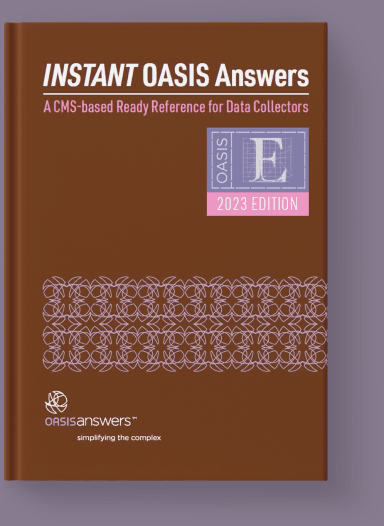Did you know that nearly 300 days have passed since OASIS-E became effective January 1st?
OASIS-E contained major revisions to the OASIS instrument and guidance manual, with multiple new standardized items added. The data you are collecting for CMS shows the quality of care your agency provides, it may impact the agency payment received and helps to identify opportunities to improve patient care.
It’s time for a check in to review the most common OASIS-E coding mistakes and how they can be prevented!
- Not following the Social Determinant of Health (SDOH) item data sources correctly for each item: Identify if responses can be determined by any source, by patient self-report only or by following the patient 1st hierarchy (ask the patient 1st, then interview others involved in the patient’s care and finally perform a medical record review to find the information to code these items accurately.) Be sure to be aware that many SDOH items include responses for a patient that is unable to respond or for a patient that declines to respond and code accordingly. AND don’t forget to check all that apply if applicable!
- Not remembering the updated definition of “Formal Assistive Services” for M2420 – Discharge Disposition: To support the new Transfer of Health (TOH) Quality measures, CMS guidance has modified the definition of “Formal Assistive Services” for M2420 – Discharge Disposition and this response will apply after discharge from your agency, if the patient remained in a non-inpatient setting and will be receiving skilled services from another Medicare certified home health agency. Additionally, this response would apply when your agency completes a discharge and a new Start of Care OASIS is necessary due to a pay source change for your patient.
- Not knowing where to find the most up-to-date guidance: OASIS guidance may be updated quarterly (since January 1st, there has already been three quarterly updates to guidance!) Know where to find the most up-to-date guidance is imperative for coding accuracy. When you need to select the most accurate OASIS responses, start with all published guidance that exists: the OASIS-E Date set and guidance Manual and then the CMS OASIS Q & As for any updates – always following the most recent instructions. Finally, when you’re unable to find an exact answer…use your clinical judgement!
We’ve reviewed three of the most common OASIS-E coding mistakes and how to avoid making them. The first year of OASIS-E data collection is almost over – has your agency completed your OASIS-E coding mistake check-in?
CMS Resources
- Guidance manual and Data Sets OASIS User Manuals – CMS
- OASIS Data Sets – CMS
- CMS OASIS Q & As – QIES Technical Support Office (cms.gov)








